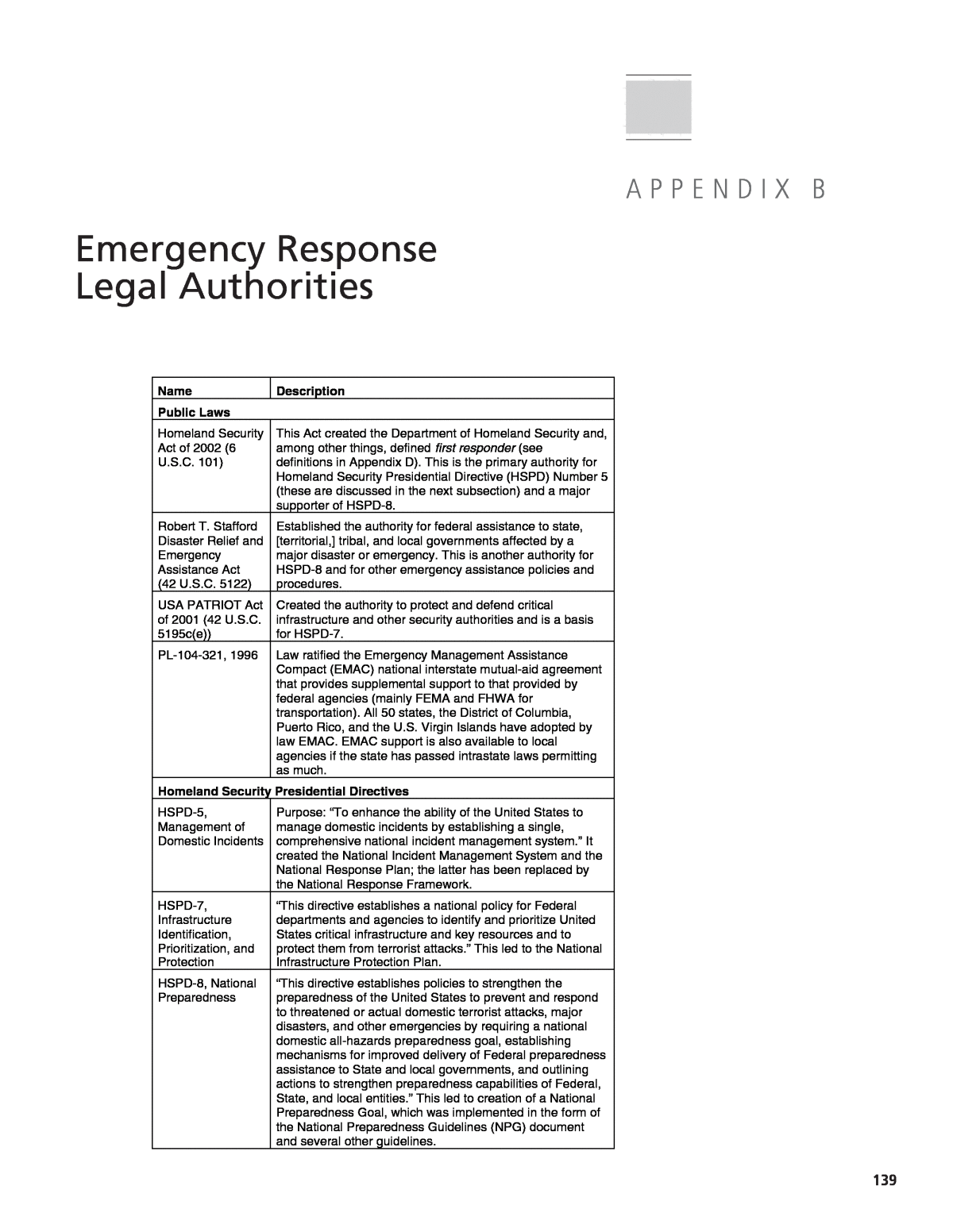
Below is the uncorrected machine-read text of this chapter, intended to provide our own search engines and external engines with highly rich, chapter-representative searchable text of each book. Because it is UNCORRECTED material, please consider the following text as a useful but insufficient proxy for the authoritative book pages.
139 Emergency Response Legal Authorities Name Description Public Laws Homeland Security Act of 2002 (6 U.S.C. 101) This Act created the Department of Homeland Security and, among other things, defined first responder (see definitions in Appendix D). This is the primary authority for Homeland Security Presidential Directive (HSPD) Number 5 (these are discussed in the next subsection) and a major supporter of HSPD-8. Robert T. Stafford Disaster Relief and Emergency Assistance Act (42 U.S.C. 5122) Established the authority for federal assistance to state, [territorial,] tribal, and local governments affected by a major disaster or emergency. This is another authority for HSPD-8 and for other emergency assistance policies and procedures. USA PATRIOT Act of 2001 (42 U.S.C. 5195c(e)) Created the authority to protect and defend critical infrastructure and other security authorities and is a basis for HSPD-7. PL-104-321, 1996 Law ratified the Emergency Management Assistance Compact (EMAC) national interstate mutual-aid agreement that provides supplemental support to that provided by federal agencies (mainly FEMA and FHWA for transportation). All 50 states, the District of Columbia, Puerto Rico, and the U.S. Virgin Islands have adopted by law EMAC. EMAC support is also available to local agencies if the state has passed intrastate laws permitting as much. Homeland Security Presidential Directives HSPD-5, Management of Domestic Incidents Purpose: âTo enhance the ability of the United States to manage domestic incidents by establishing a single, comprehensive national incident management system.â It created the National Incident Management System and the National Response Plan; the latter has been replaced by the National Response Framework. HSPD-7, Infrastructure Identification, Prioritization, and âThis directive establishes a national policy for Federal departments and agencies to identify and prioritize United States critical infrastructure and key resources and to p rotect them from terrorist attacks.â This led to the National Protection Infrastructure Protection Plan. HSPD-8, National Preparednes s âThis directive establishes policies to strengthen the preparedness of the United States to prevent and respond to threatened or actual domestic terrorist attacks, major disasters, and other emergencies by requiring a national domestic all-hazards preparedness goal, establishing mechanisms for improved delivery of Federal preparedness assistance to State and local governments, and outlining actions to strengthen preparedness capabilities of Federal, State, and local entities.â This led to creation of a National Preparedness Goal, which was implemented in the form of the National Preparedness Guidelines (NPG) document and several other guidelines. A P P E N D I X B
